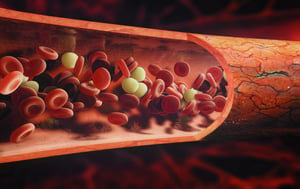How a Leading Texas Hospital Optimizes Venous Drainage
 Using smaller cannulas for minimally invasive surgery or aggressive cardiopulmonary bypass circuitry miniaturization have increased the need to augment venous drainage to achieve adequate flow rates. This is achieved through vacuum-assisted venous drainage (VAVD) which has been associated with a number of side effects, including:
Using smaller cannulas for minimally invasive surgery or aggressive cardiopulmonary bypass circuitry miniaturization have increased the need to augment venous drainage to achieve adequate flow rates. This is achieved through vacuum-assisted venous drainage (VAVD) which has been associated with a number of side effects, including:
- Increased transmission of gaseous microemboli to the patient;
- Venous line chatter (shaking or pulsing of the venous line due to rapid changes in venous line pressure caused by occluding, opening and re-occluding part of the venous cannula over a short length of time);
- Increased arterial to venous shunts in the circuit.Historically, perfusionists at the University of Texas Health Science Center in San Antonio routinely monitored the arterial output flow rate in cardiopulmonary bypass circuits with a transit-time ultrasound clamp-on Flowsensor. VAVD was monitored by observing venous line chatter and changes in the level of the venous reservoir.
A number of years ago, the perfusionists began monitoring venous line flow rates directly by applying a second transit-time ultrasonic clamp-on Flowsensor to the venous line. After 12 months, the perfusionists reviewed its impact. They found that application of a second transit-time Flowsensor resulted in the following:
- The perfusionist could easily quantify CPB circuit flow and rapidly identify V:A flow mismatches;
- The amount of volume removed per minute could be quantified during modified ultrafiltration (MUF) by noting the difference between the flow measurements displayed by the arterial and venous sensors. This resulted in exact volume administration from the reservoir to the circuit;
- Less overall vacuum pressure was needed for the CPB cases;
- The perfusionist was able to optimize the amount of vacuum being applied to the reservoir and reduce some of the known side effects from excessive vacuum pressure.
REFERENCE
Walker JL, Young HA, Lawson DS, Husain SA, Calhoon JH, “Optimizing Venous Drainage Using an Ultrasonic Flow Probe on the Venous Line,” J Extra Corpor Technol. 2011 Sep;43(3):157-61. (Transonic Reference # EC10796AH)




